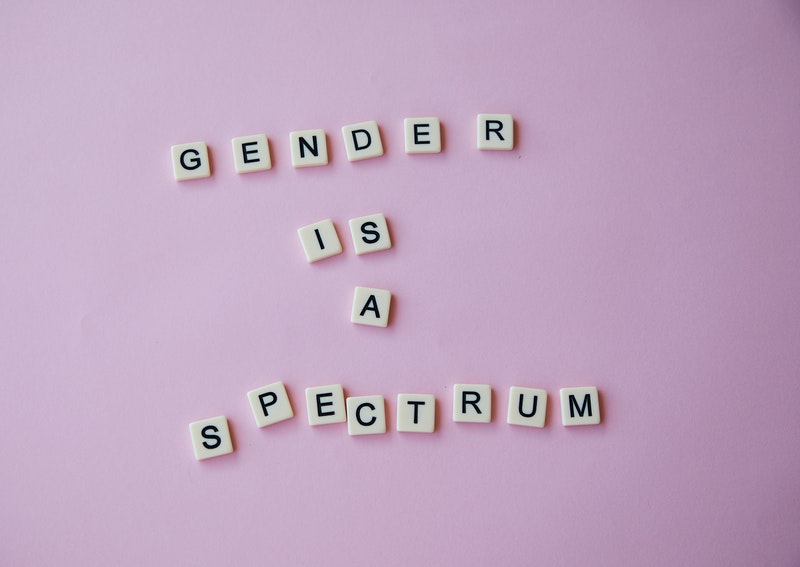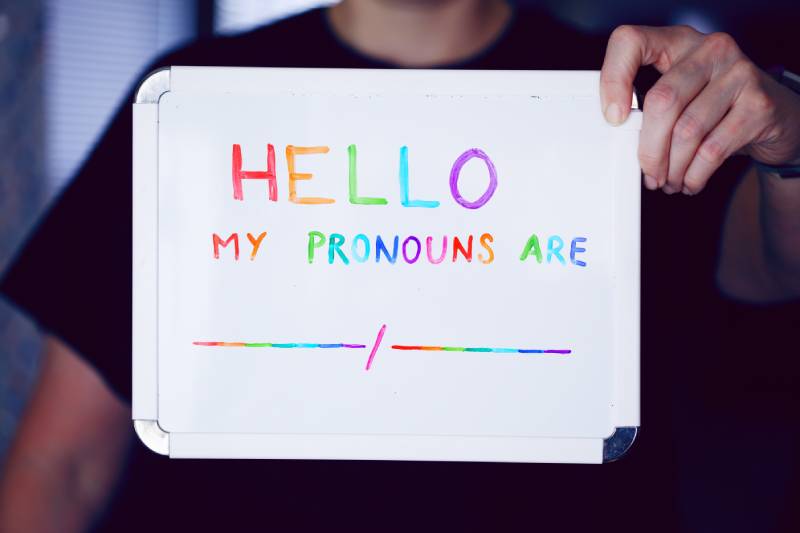 PUBLISHED ONJune 29, 2022 10:05 AMBYAmierul Rashid
PUBLISHED ONJune 29, 2022 10:05 AMBYAmierul RashidHe, she, they and them. These are gender pronouns we use daily that many hardly ever notice.
For non-binary individuals such as activist Elijah Tay, who identifies as they/them, being seen and understood is all they are asking for.
The Nanyang Technological University (NTU) student, 20, told AsiaOne: "In our society, we refer to kids as boys and girls, or we refer to the crowd as ladies and gentlemen. So the way we see gender right now is very binary.
"In order to understand they/them pronouns, we have to understand that gender exists on a spectrum. There are people who don't identify as male or female, there are people who identify as a mix of both."
Cognisant that using they/them in a singular sense is relatively unfamiliar in our society, Tay suggested: "You refer to one person as you, you refer to a crowd as you as well.
"It's pretty much the same thing with they/them pronouns. You can refer to one person as they, you can refer to multiple people as they as well."
[embed]https://www.instagram.com/p/CQvJYL5FXIP[/embed]
Understanding gender through a non-binary lens may seem difficult or awkward at first. That’s because most individuals are wired to perceive gender as only male or female.
In contrast, some societies see gender through a spectrum.
For example, within the Malay archipelago, The Bugis people of South Sulawesi, recognise five separate genders — makkunrai, oroani, calalai, calabai, bissu.
Each has a distinct identity and the Buginese language also has words specific for each gender, Tay said.
Gender pronouns under the spotlight
The use of gender pronouns was discussed in Parliament last February, when Workers' Party MP Jamus Lim raised a question to then Education Minister Lawrence Wong.
He asked if there were "any plans by the ministry to systematically compile preferred gender pronouns for students, subject to the consent of parents, and to ensure that teachers respect such pronoun usage in class."
The Ministry of Education (MOE), responding to the issue of gender dysphoria, replied: "Instead of compiling preferred gender pronouns for all students, MOE will support each student diagnosed with gender dysphoria on a case-by-case basis, working with the parents concerned, as well as medical professionals."
With preferred gender pronouns being discussed, what are then third-person singular pronouns?
Third-person pronouns are used when the speaker or writer is speaking or writing about other individuals. Examples include him, her, and them. The confusion occurs when "they/them" is used to refer to a single person.
They/them is not a fad

In an interview with AsiaOne, Ivan Panović, a linguistics and multilingual studies professor at NTU, explained that using they/them as third-person singular pronouns isn't a recent phenomenon.
"The use of they (singular), regardless of the gender or when the gender is unknown, goes back to the 14th century. For quite a long time, it was documented in language and quite widely used. We find it even in the writings of great names such as Shakespeare, Lord Byron, Jane Austen," Panović, 46, said.
He also suggested that some who may "object to this use of singular they for non-binary or genderqueer people may actually use it in everyday life".
When asked for an example, he immediately came up with one - proving his point.
"If someone asks for me, tell them that I will be back in half an hour."
Many would not bat an eyelid if the above sentence is said or written, even though "them" referred to a singular person.
Is it important to respect gender pronouns?
[embed]https://www.instagram.com/p/CVJwUnbPOdd/?utm_source=ig_web_copy_link[/embed]
For Tay, recognising pronouns — when others may ask what the fuss is all about — is an affirmation that they are seen as they are. For someone who does not identify as he/him or she/her, pronouns are more than just words.
Being misgendered happens regularly for Tay.
"Of course, in the moment I'm like [sigh] you know? That moment of gender dysphoria," Tay said.
Gender dysphoria refers to “psychological distress that results from an incongruence between one’s sex assigned at birth and one’s gender identity”, according to the American Psychiatric Association.
Language always changes but it takes time
Panović said that language is “a reflection of our reality, of the social and cultural changes that we live in”.
With his linguistics background, Panović said he understood why the debate around gender-neutral pronouns can be seen as “controversial or hard to accept” by some.
Words are added to language more often than many realise, the professor added. In 2018, “Covid” and “vaxxed” had no meaning but it’s now in dictionaries and used on a daily basis.
The seamless addition means that nouns and verbs are open class words, where creation of new ones is commonly accepted.
Pronouns, on the other hand, are closed class words and it takes a “very long time for new members to come in,” he said.
Beyond binary

When asked what’s on the horizon for gender-neutral advocacy, Tay’s response was focused on having society grasp the concept of gender as non-binary. For the activist, schools can play a big role in this mentality shift.
“We have sexuality education in school but is it really doing anything though?
“So make use of these spaces to create more wholesome and inclusive environments where people can truly have a safe and conducive learning environment. I think it really all starts from schools,” Tay said.
ALSO READ: Non-binary pronoun 'they' named Merriam-Webster word of year
